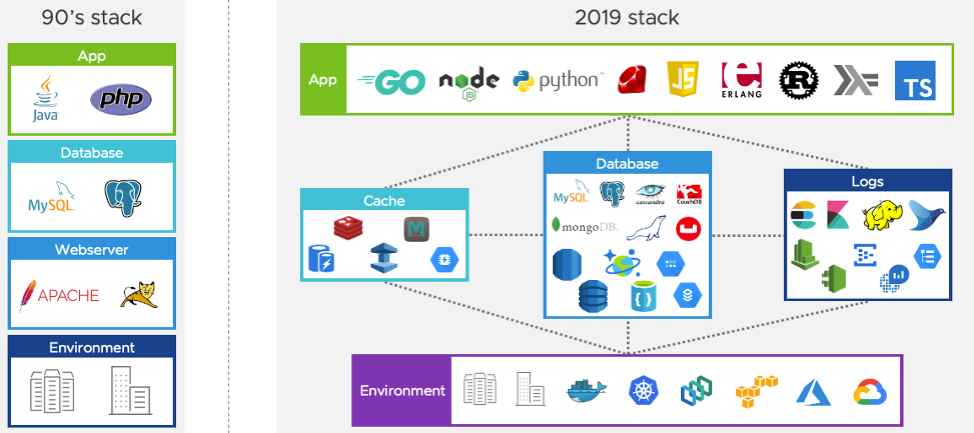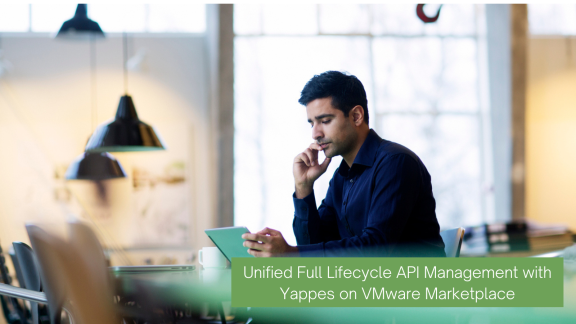Marketplaces have been around ever since humans started trading. Do they work for software? Absolutely. With the Bitnami Application Catalog as part of the VMware Cloud Marketplace, developers have a single place to find the ingredients they need to build apps faster.
Why should developers care about marketplaces?
Markets have been around ever since humans started trading. From ancient Persian civilizations to today’s farmers’ markets, the concept of a marketplace hasn’t changed that much – it’s a place for merchants and consumers to come together to exchange goods and services.
Marketplaces work so well for physical goods. But what about software? Won’t developers want to write everything themselves?
Why are marketplaces useful?
Let’s extend the food marketplace metaphor a little more. When you’re at a farmers’ market, you can pick the freshest and best ingredients. You don’t want to grow your own – you want to leverage the expertise from agricultural specialists. The same is true when you order your favorite dish at a restaurant. You don’t want to go into the kitchen and prepare the food yourself.
The same should be true when it comes to software. As developers, we want to deliver a world-class experience for our customers. We want to make sure we add value to the companies we work for. Yet, especially in large organizations, getting access to a consistent set of apps and images so we can do our jobs well can be difficult. This is what a marketplace for software should address.
As the famous management consultant Peter Drucker said, “There is surely nothing as useless as doing with great efficiency what should not be done at all.” Amazon Web Services CTO, Werner Vogels, used the term “undifferentiated heavy lifting” to describe the same thing. Developers shouldn’t do things that don’t add value to the mission of their company.
A marketplace allows developers to pick and choose the ingredients, the software components, they need to build a world-class experience. Developers shouldn’t have to worry about building the software, figuring out how to install it or where to find it.
Marketplaces make life easier for developers
Software marketplaces such as AWS Marketplace and VMware Cloud Marketplace deliver a range of compelling benefits to developers. To list a few, marketplaces:
- Have a curated catalog of solutions and services, making it easier to search and find the right tool
- Make sure that charges for the product are added to the bill of the company, saving developers time
- Validate that the solutions in their catalog work on the infrastructure you use
Ultimately, the goal of a marketplace is to expedite the time to market for any application that developers build – making their journey easier, faster, and more successful by opening up access to applications and frameworks.
A catalog of applications
The open-source solutions packaged by the Bitnami team are just one part of the applications available on the VMware Cloud Marketplace. In addition to the benefits I already mentioned, I can get the software in pretty much any format I want. While all that is awesome, my favorite feature is that Bitnami keeps my images secure.
The Bitnami team has spent years building out a process that monitors the software they package up. When new versions of the package are released or when new vulnerabilities are identified, new images are built and made available on the marketplace. The process ensures that all applications are up-to-date and secure. As a result, I can focus on building value for our customers and I don’t have to worry about keeping the stacks I use up-to-date.
Keeping the stacks underneath your app up-to-date is important because, over the last decade, the way we develop software has become more complex. Gone are the times we had a “simple” stack with a web server, a database, and a Java app. In today’s world, everything is distributed across networks and clouds.
The good thing about this new normal is that developers can pick the right tools for the job. The challenge? There are more components to keep track of.
As developers ourselves, we don’t want to spend time figuring out the settings for the MySQL database, the Kafka broker, or the Redis cache. Doing this – and keeping the images constantly up-to-date – takes time and hard work. For less experienced developers who simply want to spin up a quick database to test their app or run their proof-of-concept, the ability to grab ready-made and secure images accelerates their time to value.
The Bitnami packaged open source solutions give developers from all walks of life the ability to spin up apps with the push of a button.
Beyond your own data center
The stacks and images that the Bitnami team publish can be used in different ways. You can run them on-premises, you can host them on public clouds, or you can use them through the VMware Cloud Marketplace.
Using Bitnami images through the VMware Cloud Marketplace will also give you access to a wide range of partner software. Partners like GitLab, Aqua, and Druva have made their apps available on the VMware Cloud Marketplace – so that developers can consume these solutions quickly and easily.
As a company, I can pool together all of my compute and storage resources to create a Software Defined Data Center (SDCC) – either in my own data center or in the cloud. Then, using the VMware Cloud Marketplace, I can easily find, access, and deploy apps across the SDDC. As a developer, I push a single button to help my company protect and manage data, rather than spending time figuring out the right deployment settings. I’m up and running in minutes instead of days or weeks.
New features: pull content and Slack notifications
At VMware, we realize that not all the resources of your SDDC can receive content from the internet. There are many good use cases where you’d want to have the management plane closed to inbound connections. A new feature of VMware Cloud Marketplace is the ability to pull content from the cloud, rather than get content pushed.
Because all work happens in Slack and new or updated images are published frequently, there is also the option to have all updates delivered to a Slack channel. If your company doesn’t use Slack, there are many different options to get notifications delivered to your DevOps team. These notifications can help you define a single console with an overview of all that happens in your environment and all that needs to be done.
What’s next?
If you want to deploy tools, runtimes, and infrastructure that is always up-to-date – so that you can focus on building apps – check out the VMware Cloud Marketplace. Meantime, let me know your thoughts and send me or the team a note on Twitter.
Cover image by Mark Dalton from Pexels









